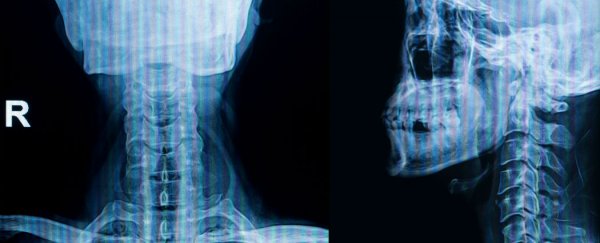The concept of having an extra skeleton might sound kind of awesome, but in reality, it's devastating. In patients with fibrodysplasia ossificans progressiva (FOP) - known more commonly as stone man syndrome - their muscles, tendons, tissues, and other types of soft tissue are gradually replaced with solid bone, not only limiting their mobility, but in some cases can make speaking, eating, and even breathing a constant struggle.
But researchers working with mice say they're closer than ever to finding a treatment for the disease, which affects affects one in every 2 million people worldwide, according to the US National Institutes of Health (NIH). A newly developed antibody has seen the progression of the disease stalled in mice for up to six weeks, with minimal side effects, they report.
With just 800 confirmed cases across the globe, stone man syndrome remains something of a medical mystery. Right now, all doctors have been able to treat stone man syndrome patients with is a steroid drug called prednisone, which only serves to ease the pain. Nothing can slow or halt the progression of the disease, which means it inevitably ends up killing anyone affected by it.
"It's not proven to do anything. It just helps them feel better through the pain of a flare-up," Betsy Bogard, director of global research development for the International FOP Association, said in a press release. "There's nothing else that people can do. This disease is on a march through their bodies, and it's not going to stop."
But researchers suspect that the malfunctioning of a gene called ACVR1, which plays a vital role in the formation of muscle and bone, could be to blame. It appears that when someone is born with mutated versions of ACVR1, the gene responds to a signalling protein called activin A by going into overdrive. Activin A is supposed to inhibit the gene's function when no more bone or muscle is needed, but in stone man syndrome patients, it does the opposite.
This is why babies born with the disease typically have large, mutated toes, and excess bone thickening their necks and shoulders, which will move down through the body and limbs. And surgery to remove the extra bone isn't an option - try that, and you'll just kick the bone production into gear again so the body replaces what the surgery cut away.
"Imagine you are driving your car down the road and you come to a red light. You press on the brakes, and the car stops," said one of the team, Aris Economides from Regeneron Pharmaceuticals in the US. "Not only does your car not stop, actually the brakes are hot-wired to the accelerator."
So Economides and his colleagues focussed on the function of activin A, and developed an antibody that blocks its signalling pathways. When tested on mice that were genetically engineered to have the disease, the antibody was able to halt excess bone formation for up to six weeks at a time, they report in Science Translational Medicine.
Before we get too excited, we do have to acknowledge that this treatment has only been tested on mice, and many successes in mice turn out to be horrible failures in humans. But Regeneron says it plans to keep the research going in the hopes that they can get the antibody ready for clinical trials. If anything, at least we know they've got the money to pursue this option till it no longer shows promise - something that many university research teams can often struggle with.
